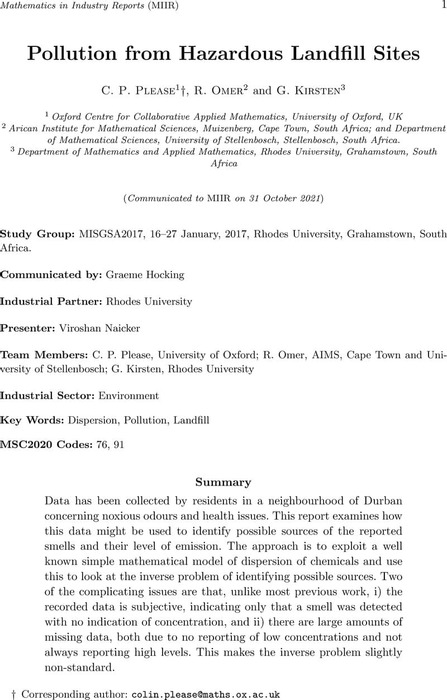Abstract
Data has been collected by residents in a neighbourhood of Durban concerning noxious odours and health issues. This report examines how this data might be used to identify possible sources of the reported smells and their level of emission. The approach is to exploit a well-known simple mathematical model of dispersion of chemicals and use this to look at the inverse problem of identifying possible sources. Two of the complicating issues are that, unlike most previous work, i) the recorded data is subjective, indicating only that a smell was detected with no indication of concentration, and ii) there are large amounts of missing data, both due to no reporting of low concentrations and not always reporting high levels. This makes the inverse problem slightly non-standard.
Content




